Namibia was the first stop on our multi-country adventure though Southern Africa in the summer of 2016. We first flew into the Namibian capital of Windhoek, then after a nights rest promptly left the next morning on a 3 day road trip to the Namib Desert.
Namib Desert
The Namib Desert is one of the oldest Deserts and ranks behind only the Atacama Desert as the driest nonpolar place on earth. Once we departed from Windhoek and got past its outskirts, the dry arid terrain quickly gave us an idea of what was in store for us over the next few days. It was hard to comprehend the vast openness of the the Namibian landscape and how unspoiled and untouched it seemed. We also found it eerie to drive for over 4 hours on non-tarmac gravel roads, and hardly see any other vehicles or signs of human settlements.
Our base for the next few days was the Namib Naukluft Lodge, named after the Naukluft Mountains that we had to cross to get into the Namib Desert. The Lodge is situated within a nature reserve, which afforded us the luxury of watching Oryx Antelopes, Wildebeest and Zebras freely roaming the plains around the property. Later in the evening we took a game drive for more wildlife sightings, then ended the long day by sipping champagne and watching the sunset from atop marble mountain.
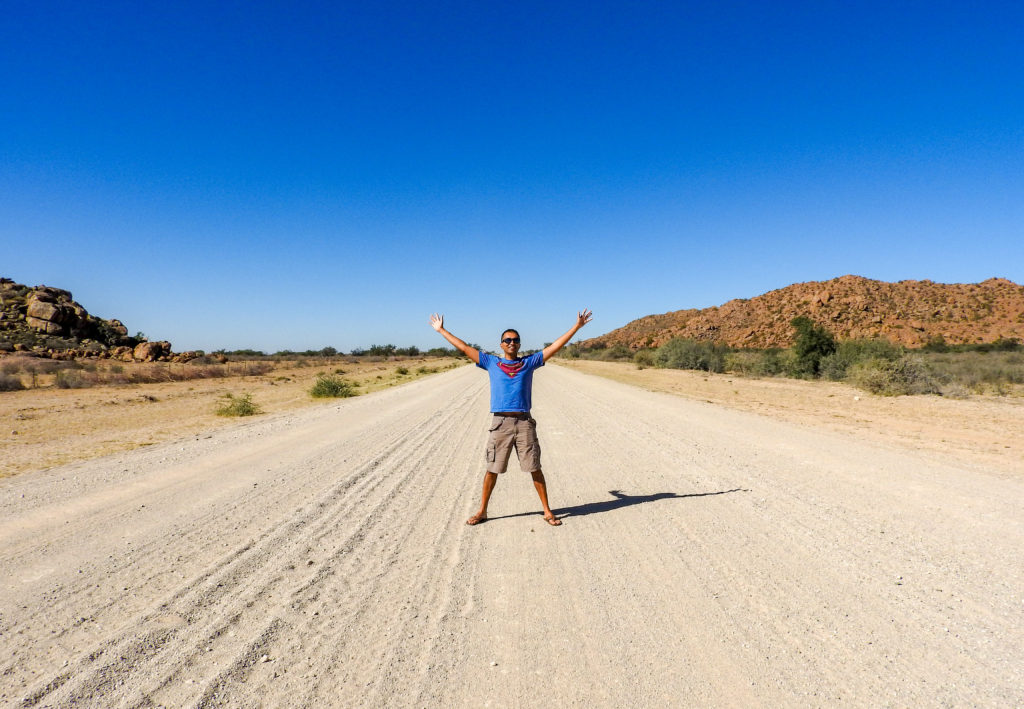
Wheres all the traffic on this national highway?
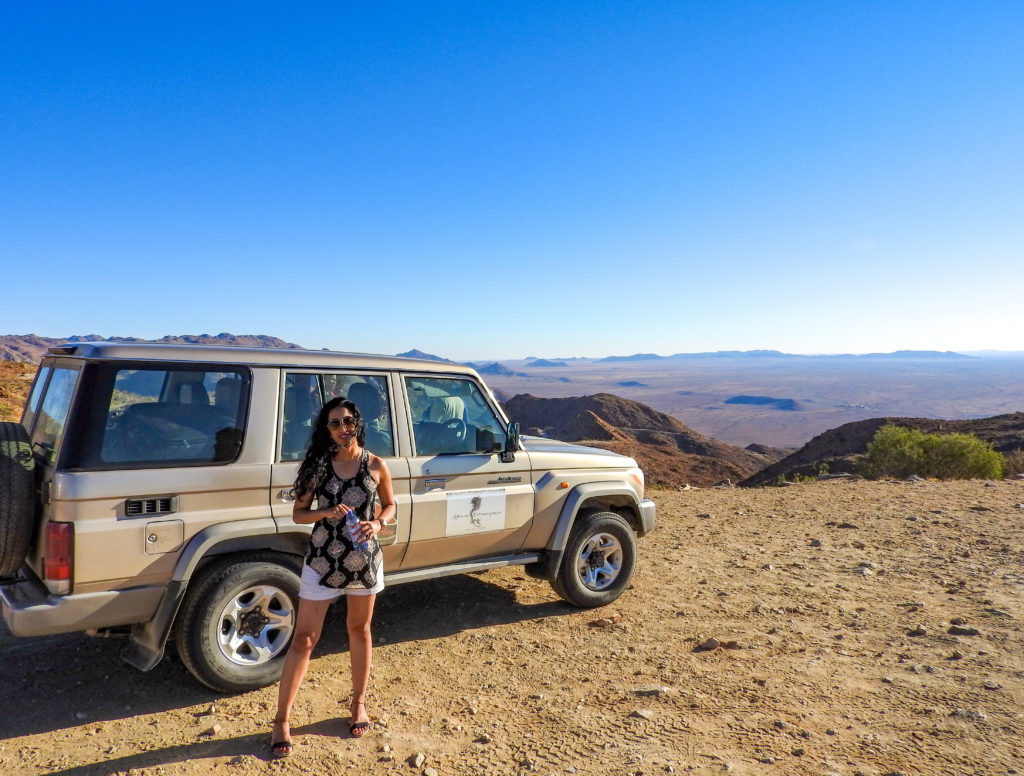
Quick stop before crossing over the Naukluft Mountains
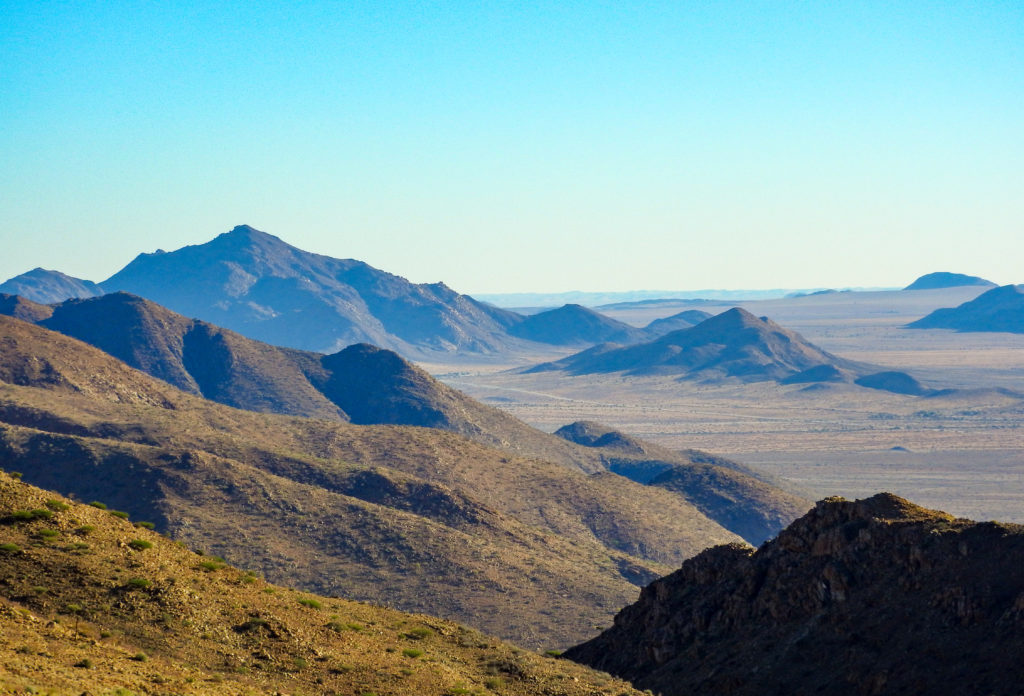
Vista point at the top of the mountains
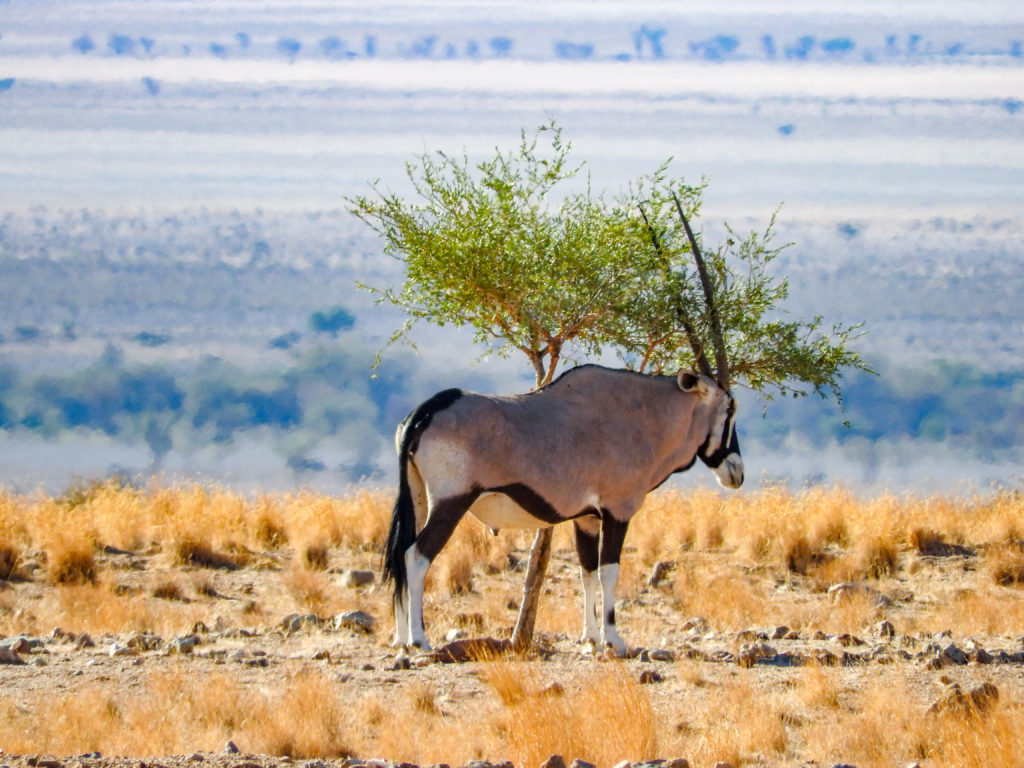
Oryx sighting on the plains by our Lodge
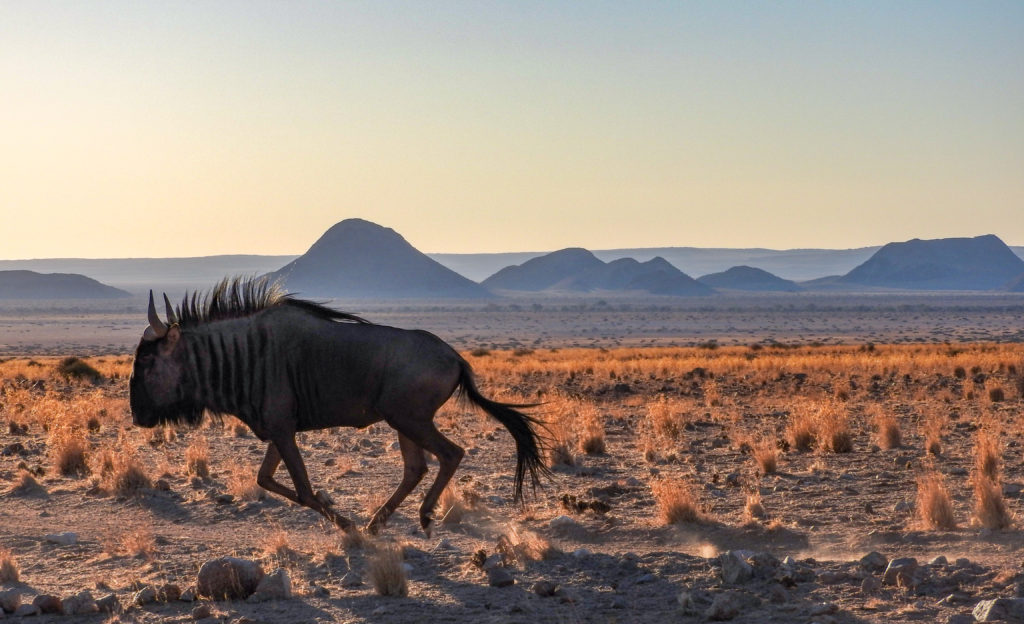
This Wildebeest decided to race our 4×4 for a bit. We won.
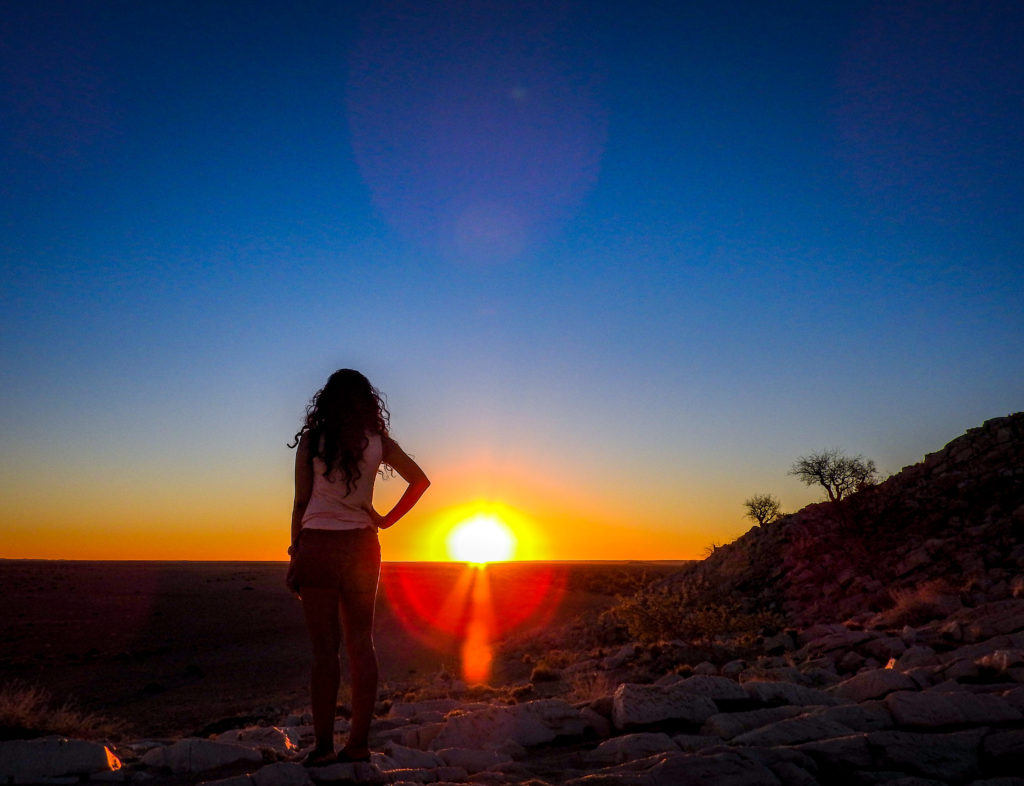
Stunning sunset views from atop the Marble Mountain
Sossusvlei Sand Dunes
The next morning we had an early start at 4am to drive into Sossusvlei National Park in order to catch sunrise over its monumental sand dunes. The sand dunes of Sossusvlei are some of the tallest in Namibia, with some reaching heights of 320m. The sand on the dunes is constantly blown over from the Namib coast, and the characteristic ochre color of the sand on the dunes is due to its iron oxide content. As the quality of sunlight changes during the day, so does the color of the dunes – from yellow to orange to red, making these dunes some of the most photographed dunes on earth. The best time to experience the dunes is at dawn, when the soft sunlight casts beautiful shadows across the deep orange sand, and before the pristine dune surfaces are punctuated by the footprints of a multitude of tourists.
Our first stop for the day was at Dune 45, so named since it is situated 45km from the Sesriem entrance gate. We took our time climbing up this massive dune, and were afforded great panoramic views of the surrounding dunes and desert landscapes. Somehow we managed to get the fine red sand in everything, and had a blast running down from the top with abandon!
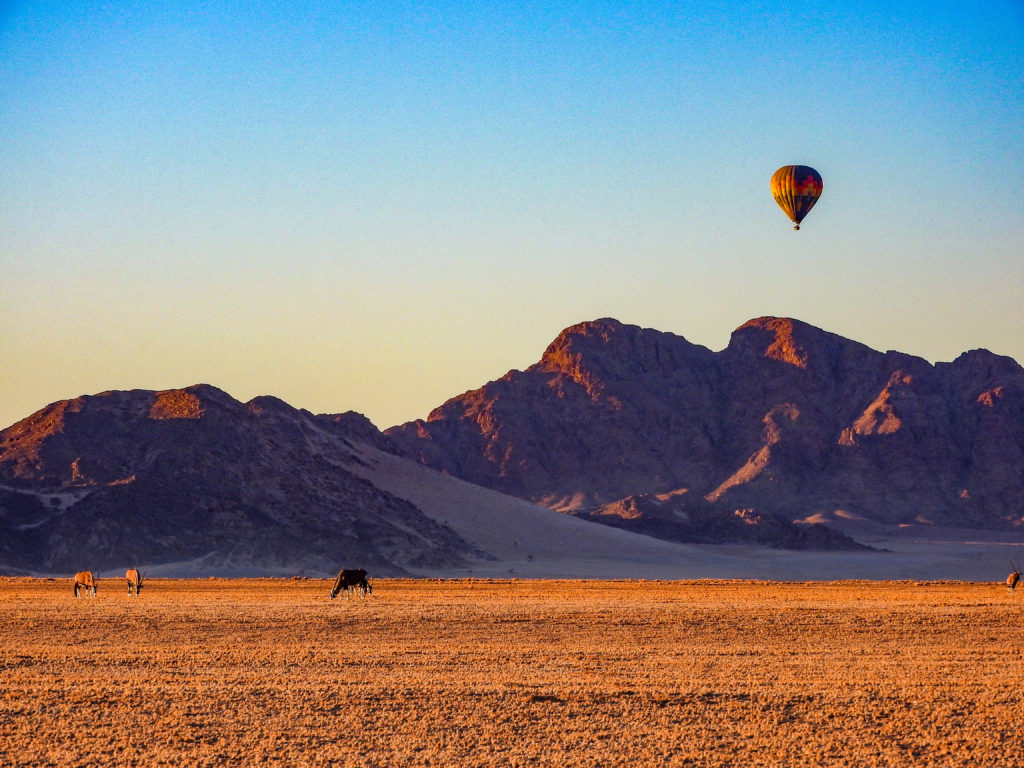
Balloon rides to catch the dunes in all their dawn lit splendor, as Oryx graze for their breakfast
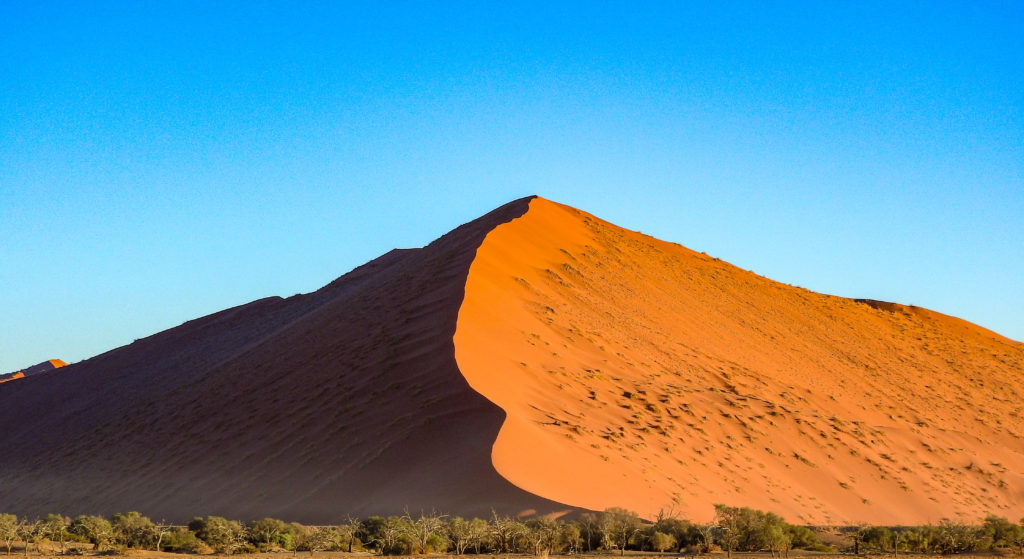
First glimpse of Dune 45
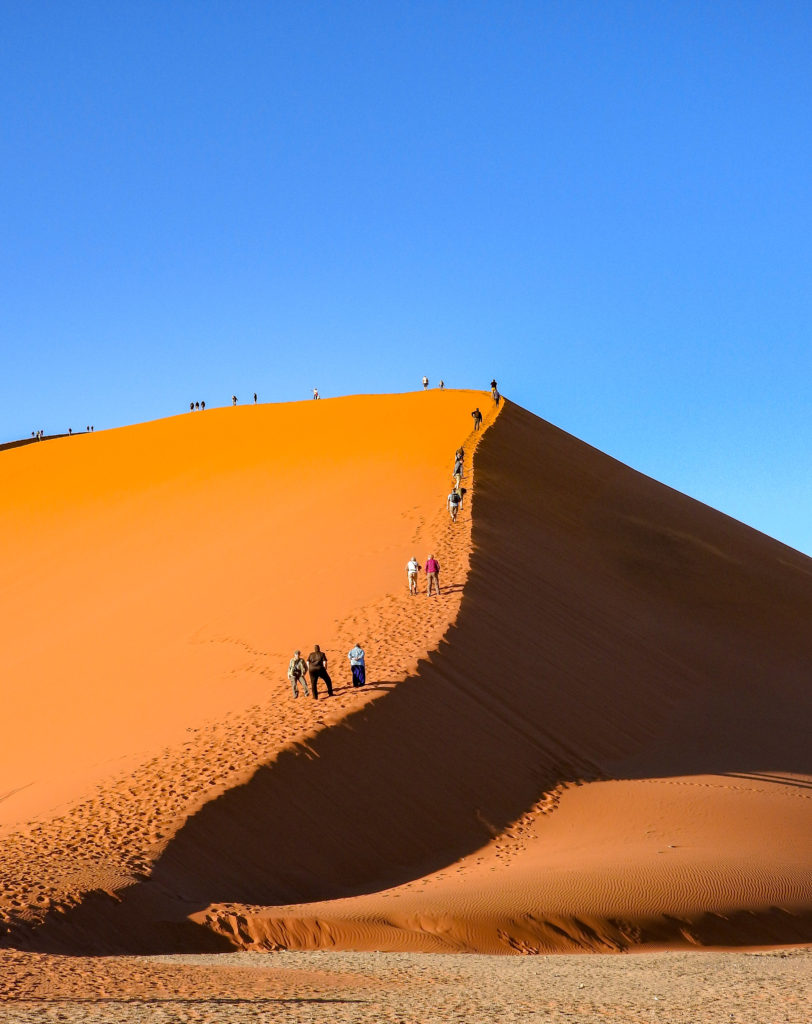
Surveying the climb we were about to embark on
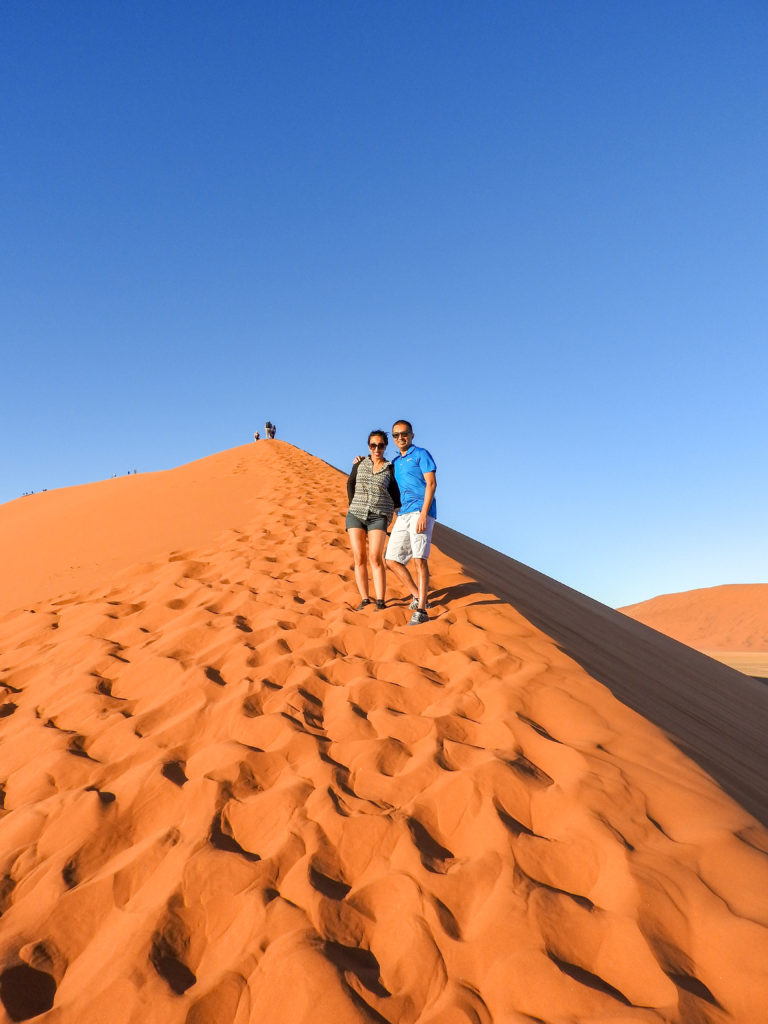
Pausing for a breather on our way up this mighty dune
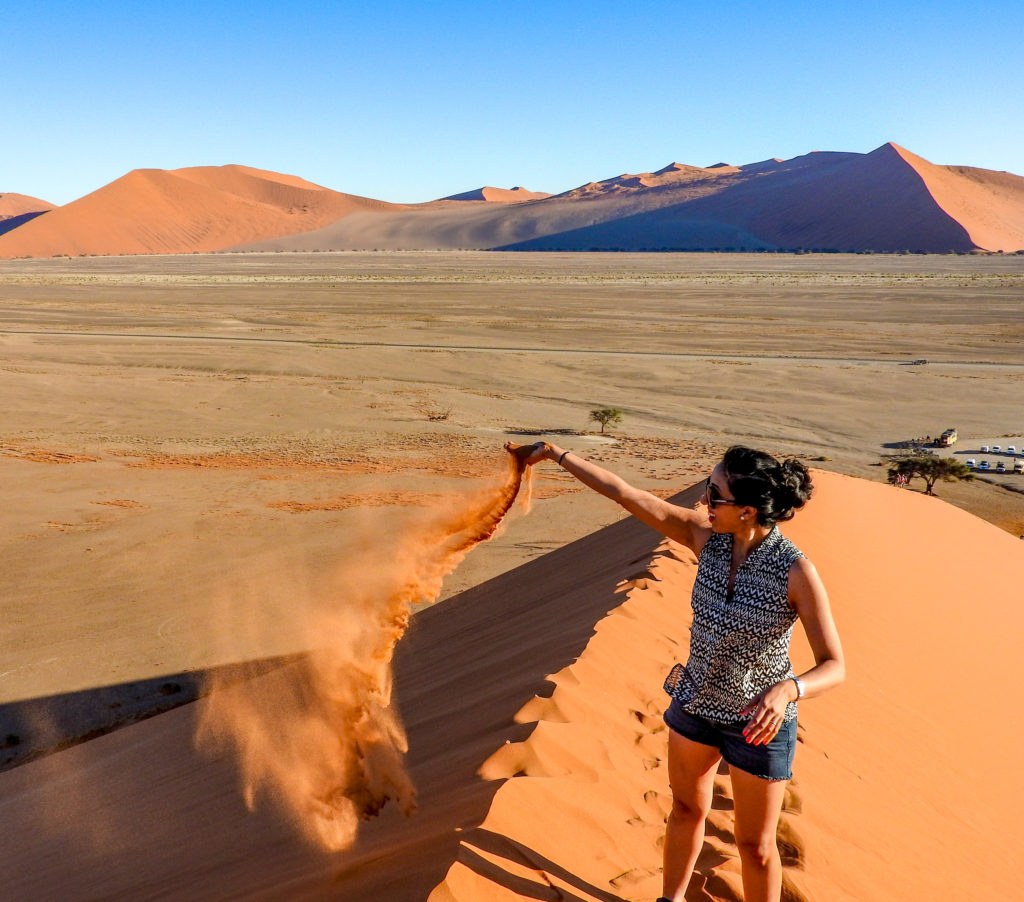
Shelly loses her grip on the sands of time…
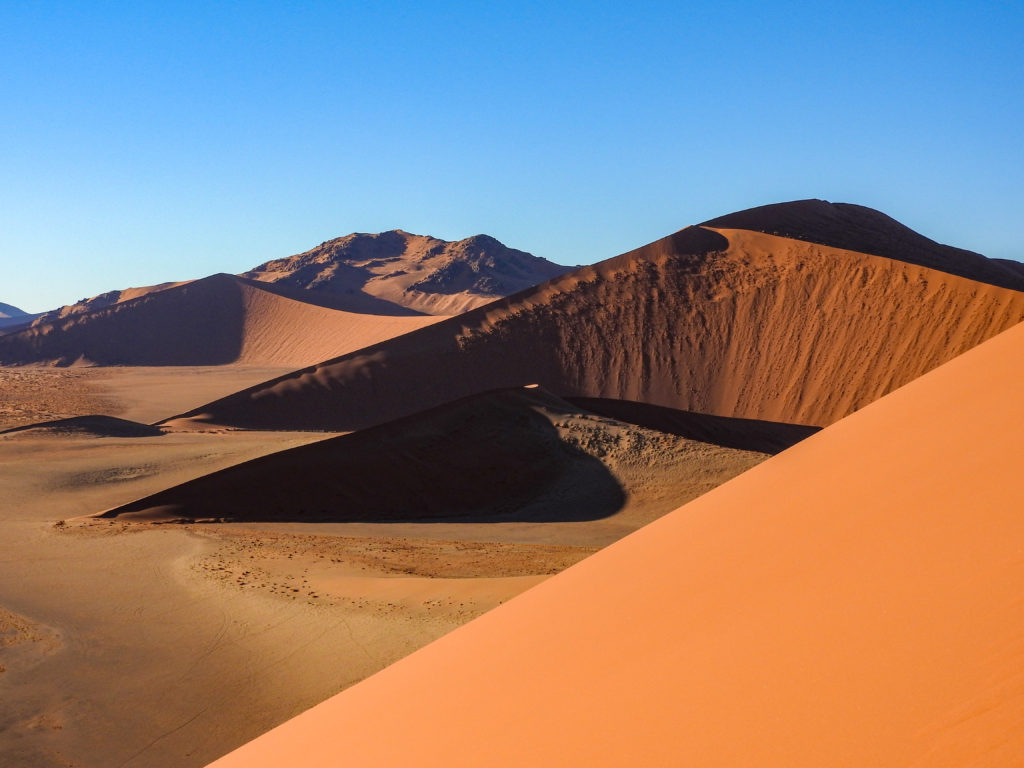
View of the surrounding dunes from the summit of Dune 45
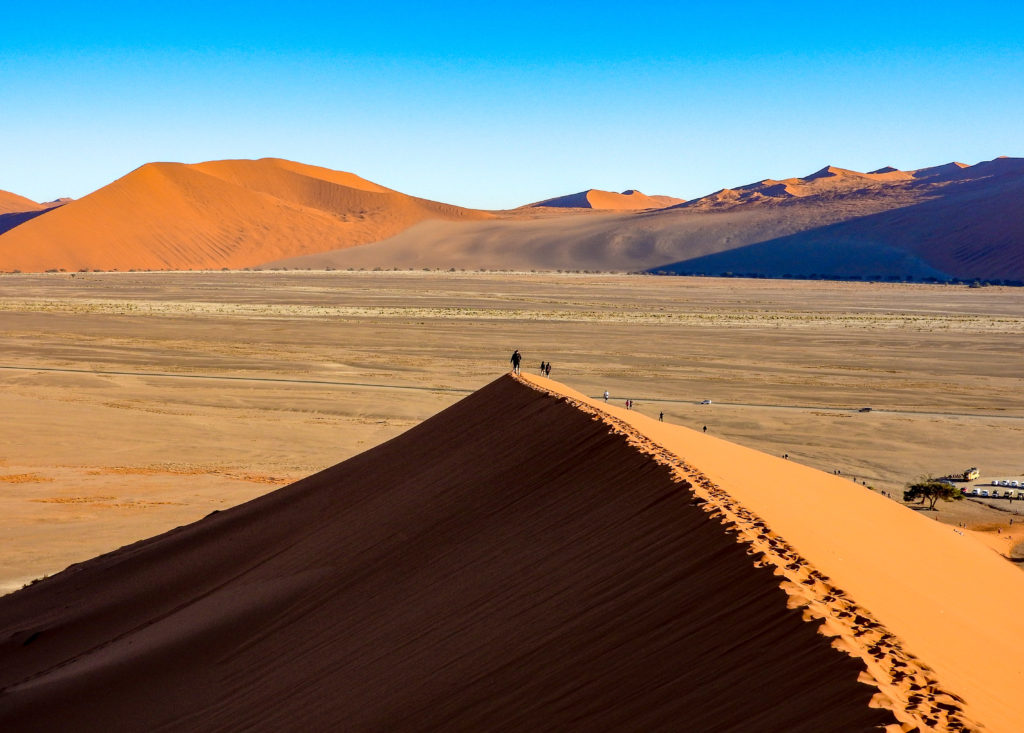
We could’ve retraced our path to head back…
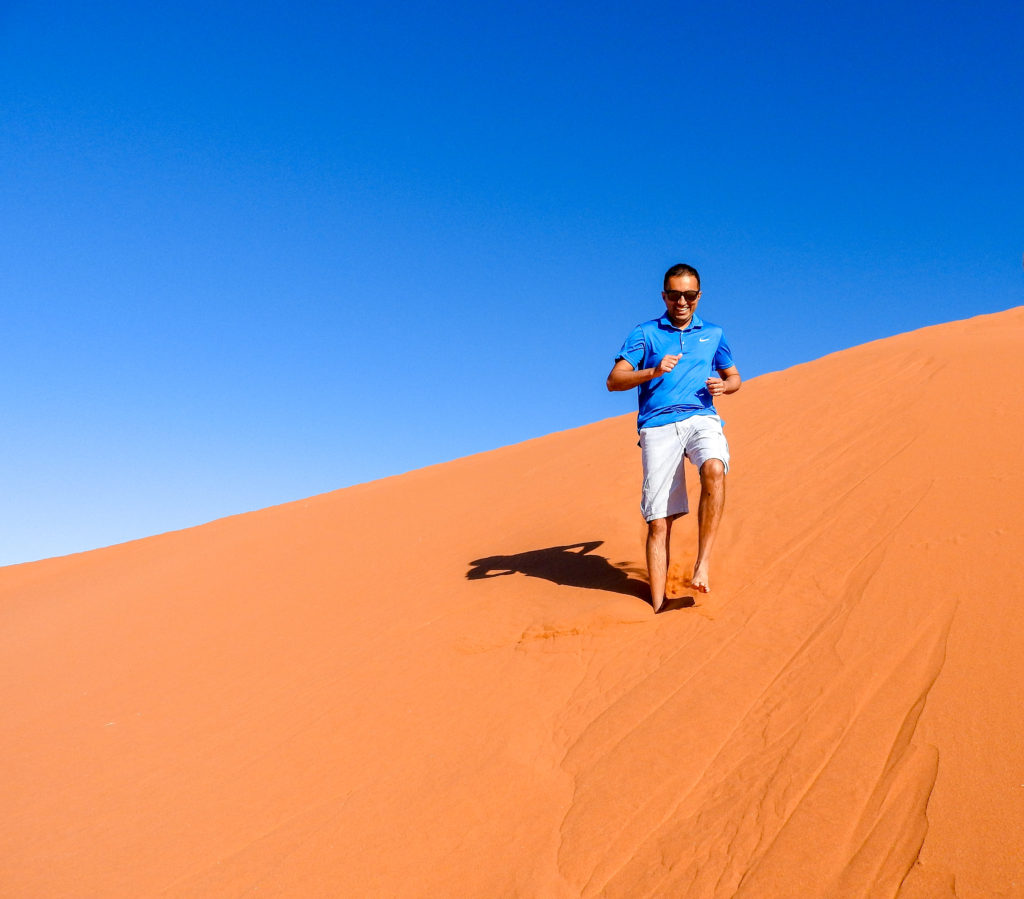
…but it was more fun running down for sure
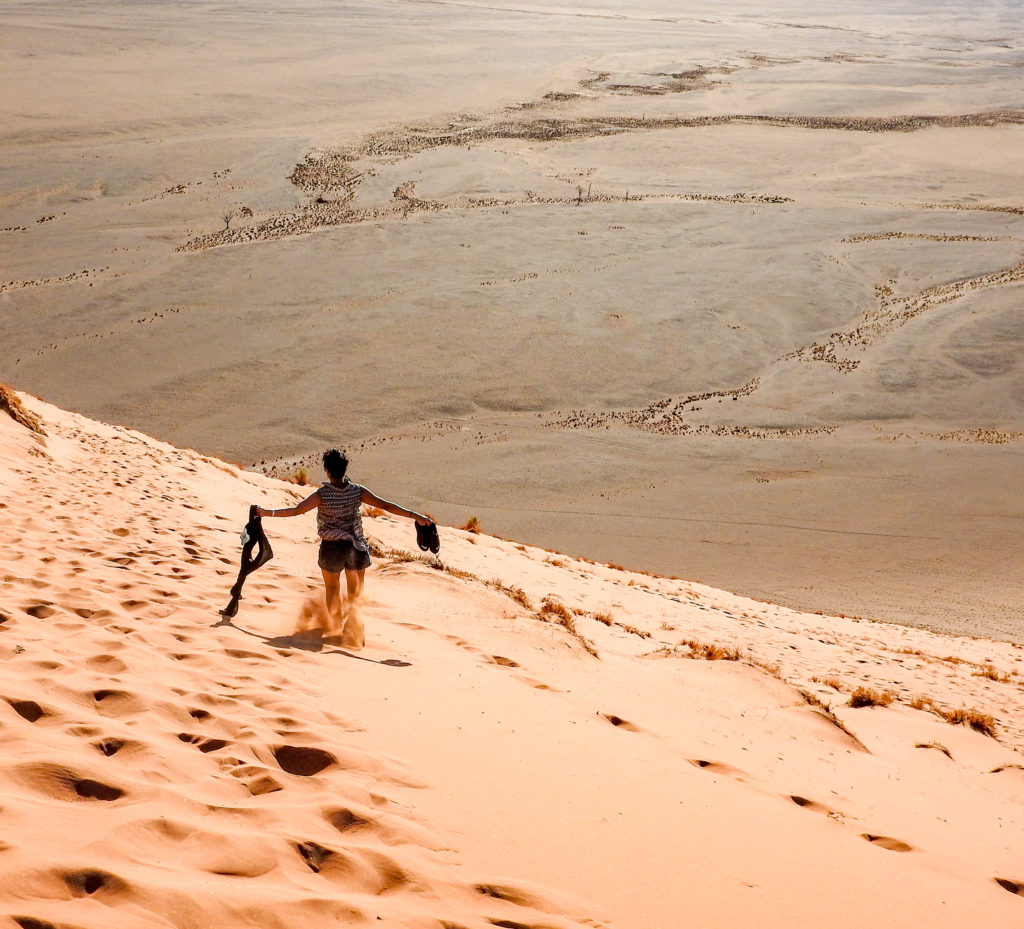
Yep, definitely more fun this way down!
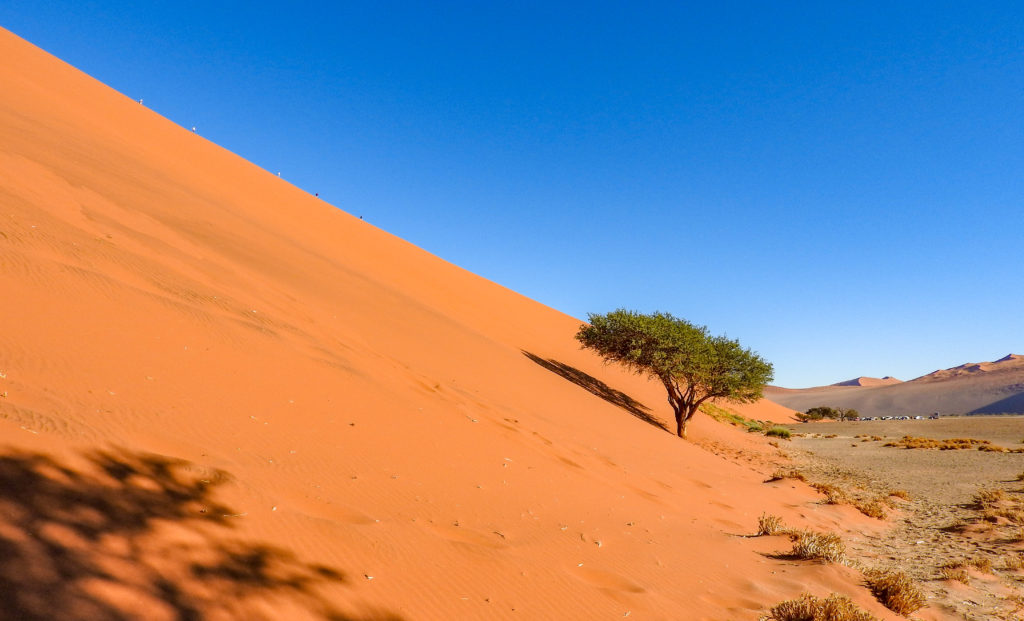
Lonely Acacia tree guarding the base
Dead Vlei
Our next stop within Sossusvlei Park was the Dead Vlei, which translates to dead marsh. This distinctive natural feature was formed when the surrounding dunes caused an ancient river to change course, and ended up making a dried clay pan out of what was once a fertile oasis. As a result the Acacia trees that grew in the marsh dried up and blackened from dehydration over hundreds of years. These blackened Acacia trees create a surreal painting like scene – providing stark contrast against the bright white cracked clay riverbed, the deep orange sand dunes, and the rich blue sky – a photographers dream!
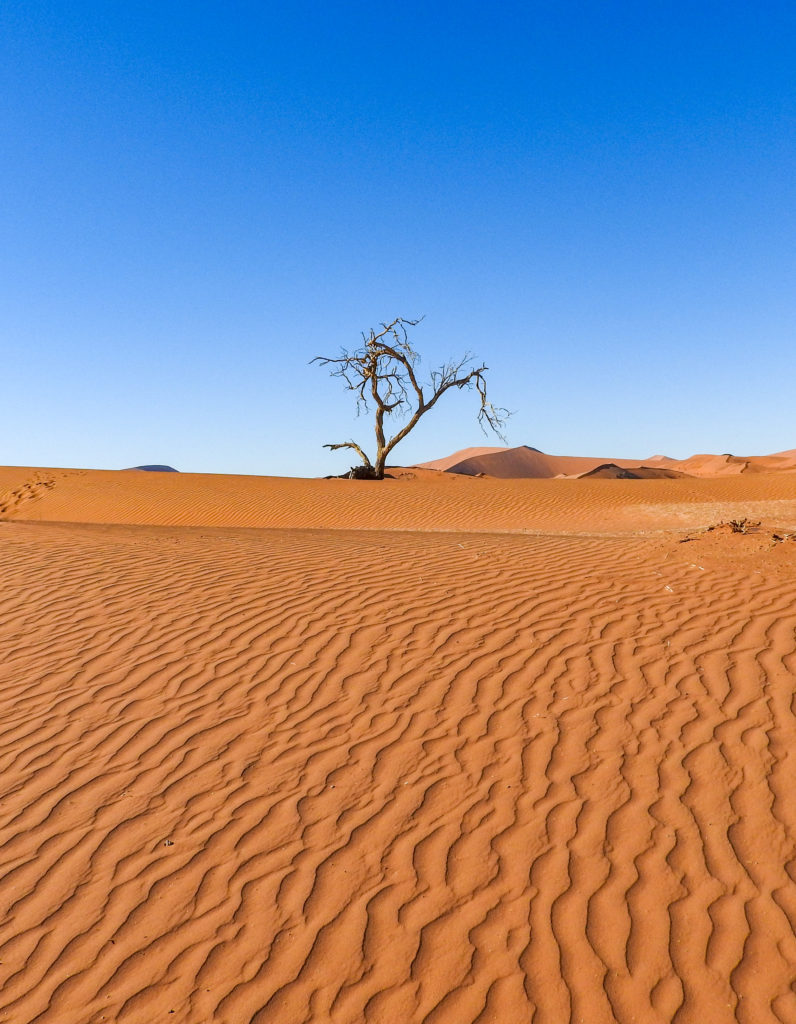
We had to take a short hike across the red hot sand to get to the main attraction
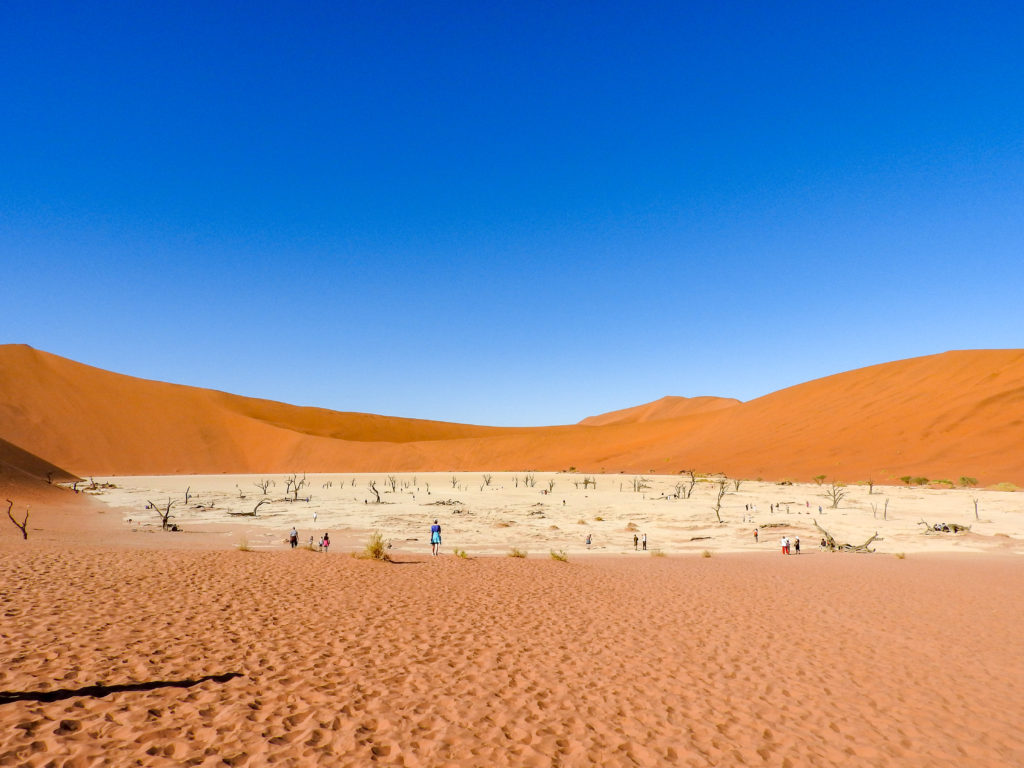
Approaching the bright white Dead Vlei clay pan
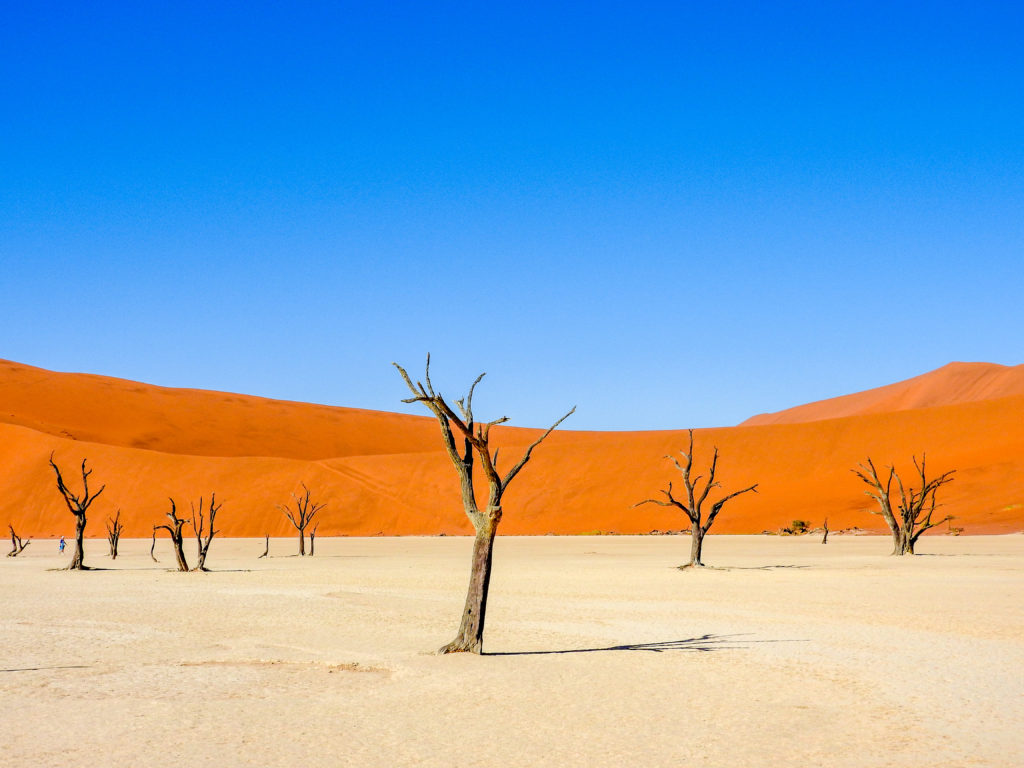
The contrasting and striking colors of Dead Vlei
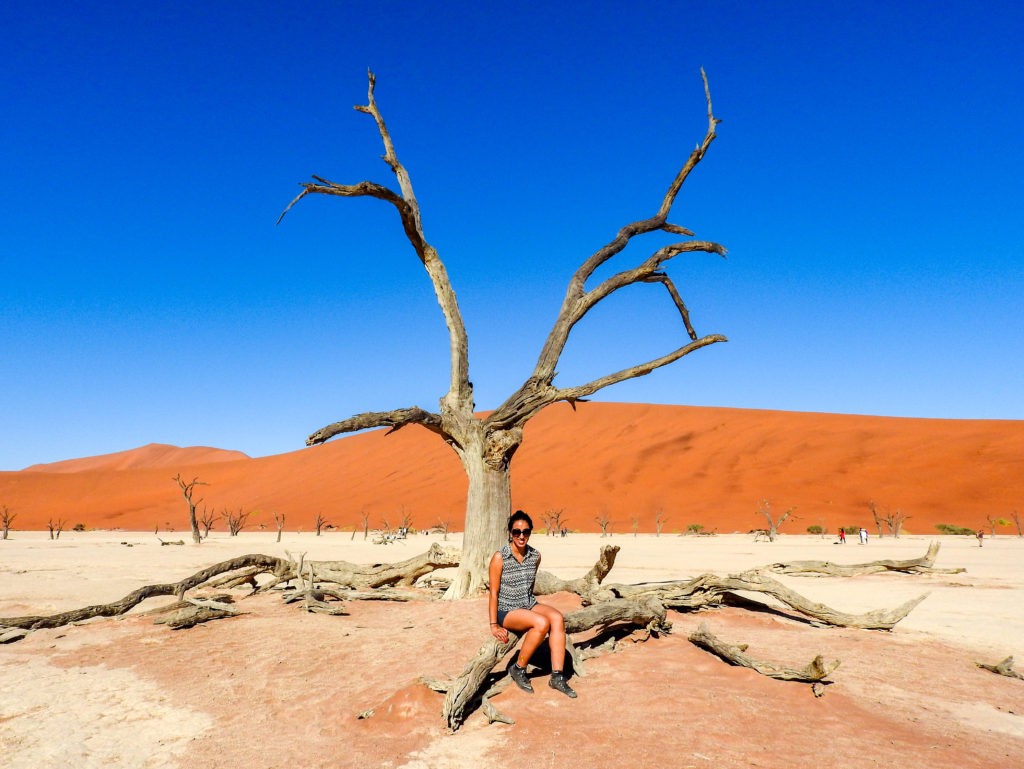
Don’t expect to find any shade under these trees…
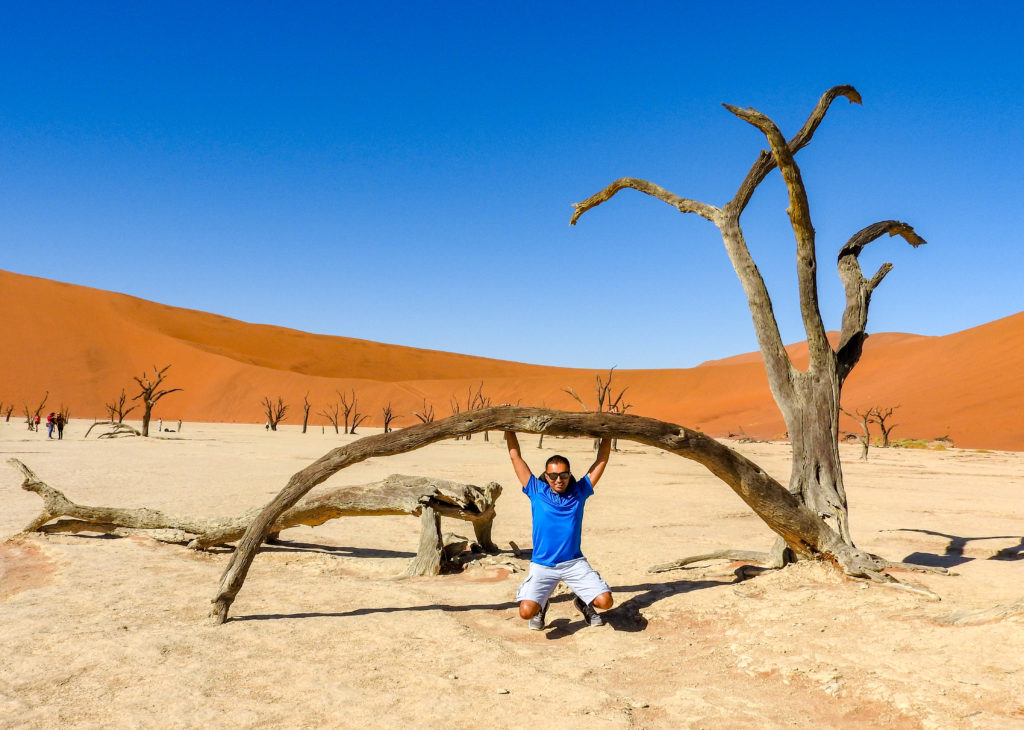
…but they make for some great photo props
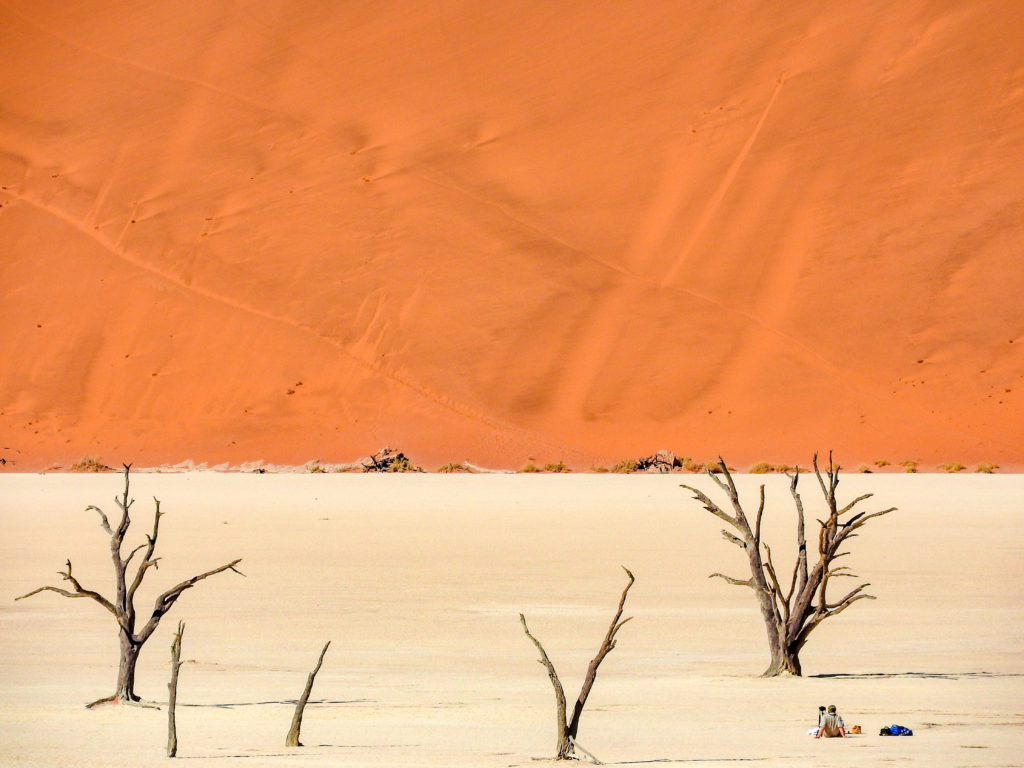
This photographer seemed ready to wait it out till sunset for the perfect shot
Sesriem Canyon
This gaping canyon was formed by waters of the Tsauchab River cutting though the rocks over millions of years. The early Afrikaans settlers named the canyon ses riem (six straps) after the length of leather that they had to lower into the canyon to collect water. On our way back to the lodge we made a quick stop here to marvel at this deep yet narrow rocky corridor in the Namib Desert.
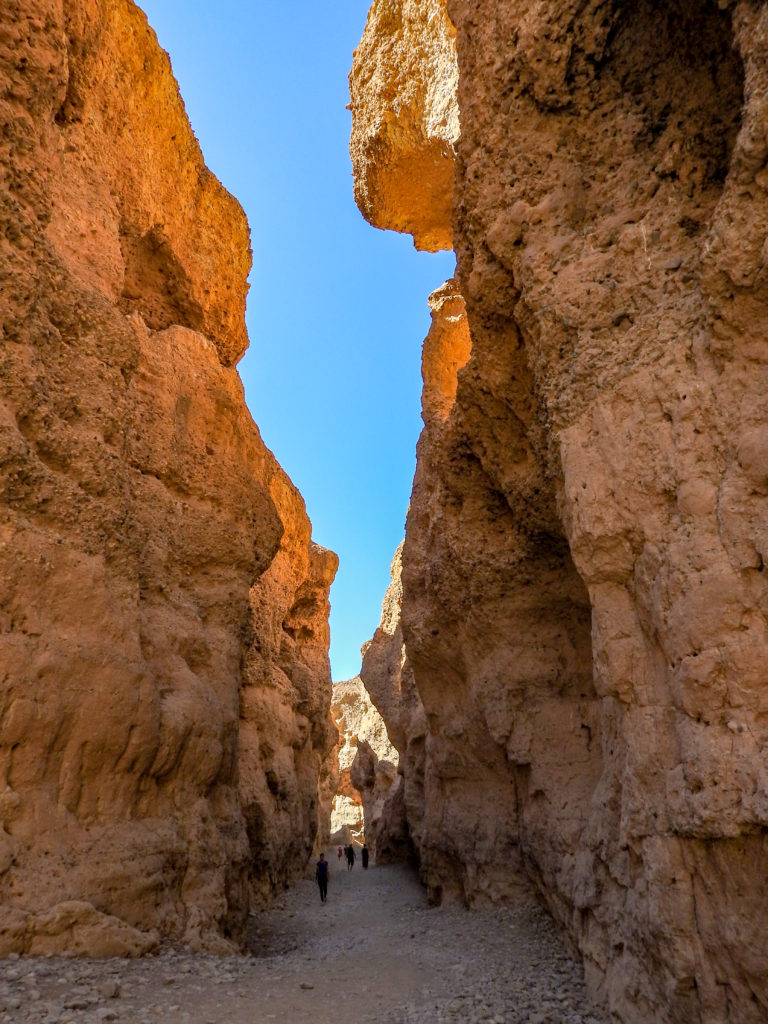
The narrow corridor of Sesriem Canyon
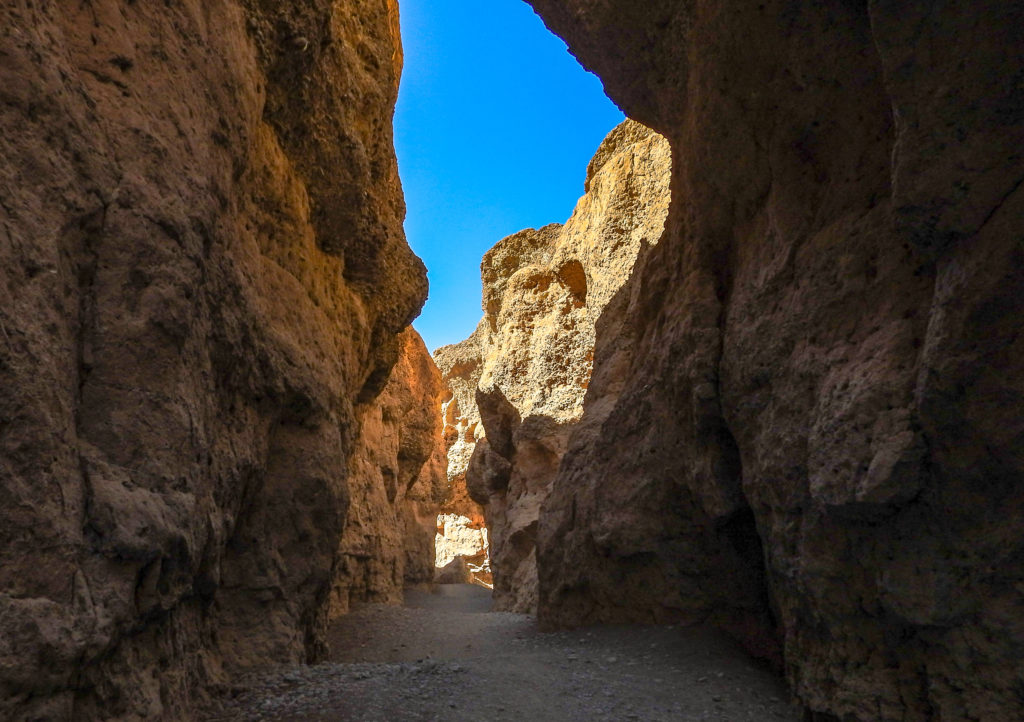
Hard to believe that this dry rocky bed was cut through by river waters

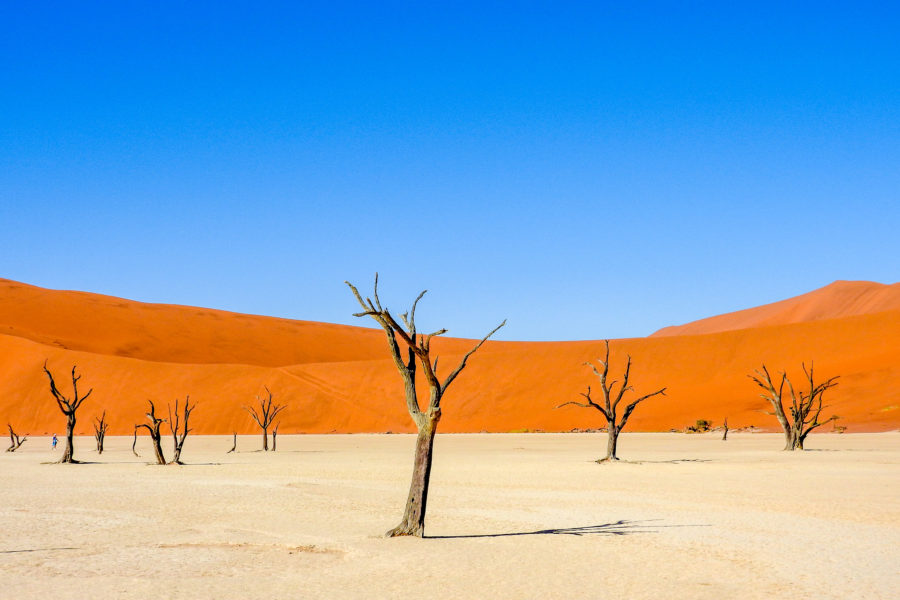
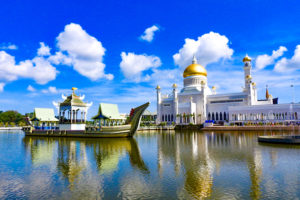
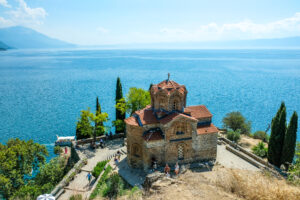
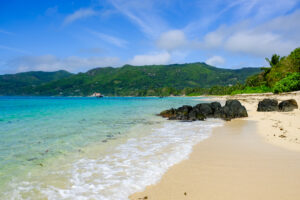




Leave a Reply
Please share your comments below!